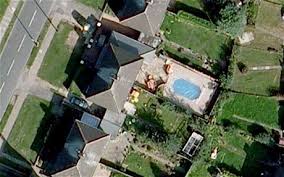
The Rise of Giant Swimming Pools
In recent months, there has been a notable trend across urban areas in the UK where residents of council houses are increasingly installing giant swimming pools in their gardens. This phenomenon raises discussions about community living, property rights, and recreational benefits in densely populated regions.
Current Developments
Sociable summers and changing lifestyle preferences have led to a surge in demand for larger outdoor communal spaces. Local councils, such as in Birmingham and Manchester, report a significant increase in planning requests for swimming pools in residential gardens, particularly in lower-income housing areas. As the public seeks more leisure options close to home, these projects have become attractive alternatives to crowded public facilities.
According to a survey by the Local Government Association, around 20% of council house residents expressed interest in the addition of swimming pools or water features in their gardens. The cost of installation can be high, but many residents are opting for inflatable or temporary structures to bypass planning constraints and lower expenses.
Community and Environmental Impact
The introduction of swimming pools into council house gardens is not without its challenges. Concerns have been raised regarding water usage, potential safety hazards, and aesthetic considerations affecting neighbouring properties. Local councils are working to find a balance, implementing guidelines for size, design, and maintenance to ensure community harmony.
Additionally, some councils are opting to incentivise the development of communal pools or splash parks, fostering a sense of community while providing recreational facilities. This also mitigates individual property concerns while maximising public enjoyment.
The Future of Recreational Spaces
As this trend continues to evolve, it could reshape the landscape of urban housing and public amenities. With versatility for recreational activities and a push for healthier lifestyles, giant swimming pools may very well become a staple feature within the gardens of council house neighborhoods.
The future may also see councils integrating these facilities into urban planning, encouraging a move towards more green and leisure spaces that enhance community interaction. As the popularity of home-based leisure activities rises, local authorities must adapt to support this new way of life.
Conclusion
The emergence of giant swimming pools in council house gardens reflects broader changes in lifestyle preferences and urban recreation strategies. Whether this trend continues will depend on community response, regulatory frameworks, and on how well local councils can manage these evolving recreational needs within their urban landscapes.
You may also like

Transform Your Home with Spooky Halloween Decorations in 2023

Stacey Solomon and Mrs Hinch: A Dynamic Duo in Home Cleaning
